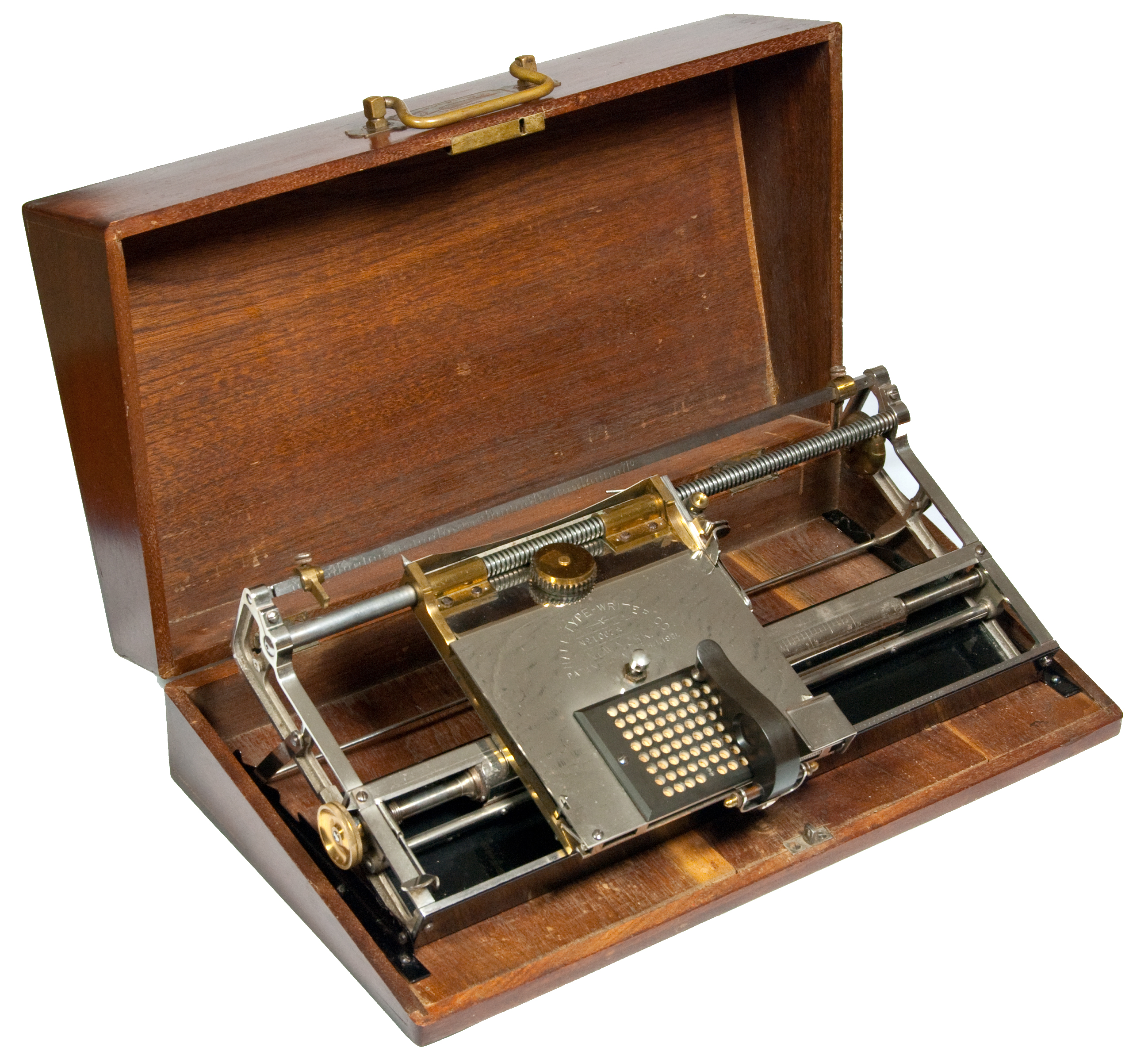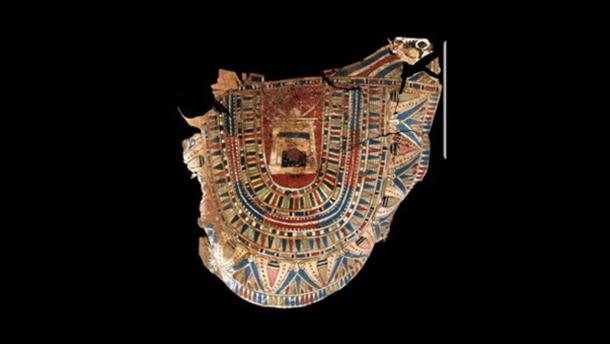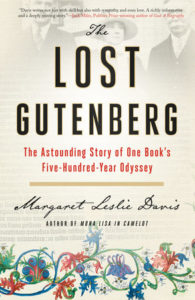via AbeBooks.com by Richard Davies

Before Instagram, selfie sticks, disposable cameras, Polaroids, and box brownies, there were carte de visites – small photographic albumen prints, mounted on card, which were wildly popular during the Victorian era.
Also known as CdV, carte de visites followed the early pioneering photographic techniques such as daguerreotype and ambrotype, which were expensive and difficult to reproduce. Cartes de visites were born from calling cards, which bore the owner’s name and usually an emblem, and were presented to the host during a social visit. Homes often had a tray near the door for collecting calling cards.
Continue reading
==============================
via Boing Boing by Cory Doctorow

Martin Howard from Antique Typewriter (previously) writes, "In 1881, Thomas Hall, a Brooklyn engineer, invented the first portable typewriter that would enable a person to type with the machine anywhere, even on one’s lap. This was also the first index typewriter, a typewriter with no keyboard that requires one to use a selector. In this case, a black handle is depressed to choose the characters when typing. The Hall, despite its unusual design, proved to be quite successful over the next twenty years."
Continue reading [for a fascinating story and some marvellous images]
==============================
via Interesting Literature
In this week’s Dispatches from The Secret Library, Dr Oliver Tearle analyses one of Rudyard Kipling’s most baffling stories
I agree with Neil Gaiman: Rudyard Kipling was at his best in the short story form. The generous 800-page Fantasy Masterworks volume of Kipling’s ‘fantastical tales’ which I own (The Mark of the Beast And Other Fantastical Tales (Fantasy Masterwork) [link is to Amazon) showcases the work of a writer who possessed not only a staggering imagination but narrative ingenuity which we rarely see in writers of short stories. Of all Kipling’s short stories, ‘Mrs Bathurst’ is one of the most ingenious. It is also one of the most genuinely chilling.
Continue reading
==============================
via Ancient Origins by Ed Whelan

Fragment of painted cartonnage found inside the tomb. Credit: Ministry of Antiquities
The Ministry of Antiquities in Egypt has announced a major archaeological discovery in the south-east of the country. An international team has uncovered 30 Egyptian mummies that are approximately 2000 years old. The mummies include adults, children and infants and they were found in a network of burial chambers . A room full of items related to ancient funerary practices was also brought to light. This discovery is expected to help us to better understand Ancient Egypt during a crucial period of change.
Continue reading
==============================
via the OUP blog by Marie-Ève Marchand

“Castle” by Tama66. Public Domain via Pixabay.
For those of us used to visiting historical houses and encyclopedic museums, the word “period room” will sound familiar. A period room is a display combining architectural components, pieces of furniture, and decorative objects organized to evoke — and in some rare cases recreate — an interior, very often domestic and dating from a past era.
Continue reading
==============================
Unwrapping the Most Beautiful Gutenberg of Them All
via Arts & Letters Daily: Margaret Leslie Davis in Literary Hub

A wooden box containing one of the most valuable books in the world arrives in Los Angeles on October 14, 1950, with little more fanfare—or security—than a Sears catalog. Code-named “the commode,” it was flown from London via regular parcel post, and while it is being delivered locally by Tice and Lynch, a high-end customs broker and shipping company, its agents have no idea what they are carrying and take no special precautions.
The widow of one of the wealthiest men in America, Estelle Betzold Doheny is among a handful of women who collect rare books, and she has amassed one of the most spectacular libraries in the West. Acquisition of the Gutenberg Bible, universally acknowledged as the most important of all printed books, will push her into the ranks of the greatest book collectors of the era. Its arrival is the culmination of a 40-year hunt, and she treasures the moment as much as the treasure.

From The Lost Gutenberg by Margaret Leslie Davis, published by TarcherPerigee, an imprint of Penguin Publishing Group, a division of Penguin Random House LLC. Copyright © 2019 by Margaret Leslie Davis.
==============================The Libro de los Epítomes was a catalogue for Hernando Colón’s 16th-century collection, which he intended to be the biggest in the world
via the Guardian by Alison Flood

His life’s work ... Hernando Colón. Photograph: Biblioteca Colombina (Seville)
It sounds like something from Carlos Ruiz Zafón’s The Shadow of the Wind and his The Cemetery of Forgotten Books: a huge volume containing thousands of summaries of books from 500 years ago, many of which no longer exist. But the real deal has been found in Copenhagen, where it has lain untouched for more than 350 years.
Continue reading
==============================
via Boing Boing by Mark Frauenfelder
The Velogemel is a wooden bike that was invented in Grindelwald, Switzerland in 1911. It looks like a lot of fun to ride on down a snowy mountain at a speed of 25 mph. No brakes, though. You have to use your feet to slow down.
==============================
The hard part was keeping the list down to ten.
via the Big think blog by Scotty Hendricks
- Russia's history is fascinating and filled with colorful characters.
- Some of the most influential of them have been extremely controversial.
- Here are ten of the most interesting, both good and bad.
Russia is a fascinating place. Its history is filled with adventures, drama, triumphs, and tragedies. Many of the most interesting people to grace that history have been extremely controversial. Today, we'll look at ten of them.
Continue reading but for those who do not want to then I can tell you who the TOP TEN are.
- Ivan the Terrible
- Mikhail Bakunin
- Peter the Great
- Leo Tolstoy
- Dmitri Mendeleev
- Catherine the Great
- Viktor Tikhonov
- Joseph Stalin
- Grigori Rasputin
- Mikhail Gorbachev
via Interesting Literature Dr Oliver Tearle analyses this children’s rhyme

‘Little Boy Blue’ is a popular children’s rhyme, but as is the case with so many nursery rhymes (as we’ve been discovering in the course of researching these posts), the meaning of ‘Little Boy Blue’ is far from apparent. What does this curious little nursery rhyme mean, or is it an example of that genre of perennial appeal, nonsense verse?
Continue reading
No comments:
Post a Comment